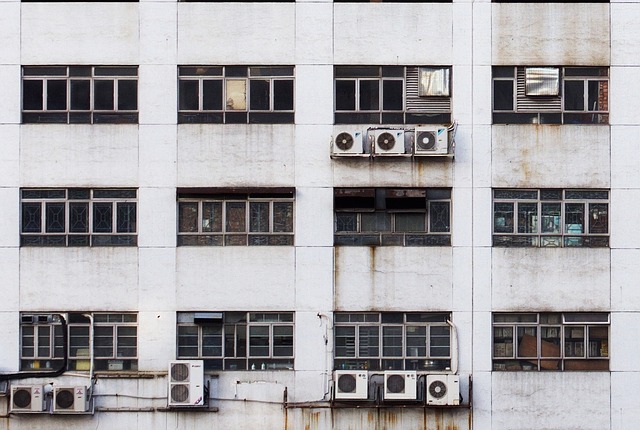By Dr. Raed Kombargi and Jad Moussalli, Contributors
Global demand for air-conditioning is projected to triple over the next 30 years, as the planet warms and urban populations grow, particularly in emerging markets. Meeting that demand will call for significant investments in new cooling infrastructure and the electrical generating capacity necessary to power it. Although traditional cooling technologies are expected to become more efficient in coming years, countries will need to plan for these additional loads, which will be expensive. Emerging markets can also make use of district cooling, an approach that the Gulf Cooperation Council (GCC), which consists of six Middle Eastern countries — Saudi Arabia, Kuwait, the United Arab Emirates, Qatar, Bahrain, and Oman — have successfully adopted.
By introducing district cooling where appropriate, and by learning from the GCC experience, other countries could provide more efficient cooling and could generate energy savings of over $1 trillion by 2035.
Globally, most of the increase in cooling will occur in fast growing emerging markets in hot and humid climates. Higher living standards in countries such as China, India, and Indonesia will mean that more people will want air conditioning. Urbanization makes matters worse. Appliances and machinery create heat when they operate, leading to “heat islands” that are much warmer than surrounding areas. The International Energy Agency forecasts that demand for cooling will double worldwide by 2035. The amount of energy used for cooling will go up from 2,200 terawatt-hours in 2019 to 4,000 terawatt-hours in 2035.
The problem is that most conventional air-conditioning systems are designed to cool individual buildings. One system cools a residential apartment building when people are home, on nights and weekends, even if much of that building is empty on weekdays. Another system cools the office tower next door, which is largely empty outside of working hours. The peak electrical load required to service both systems is higher than it needs to be.
District cooling is more efficient. This is because district cooling aggregates demand among different types of customers, ideally a mix of residential, office, and commercial spaces. A single centralized plant provides chilled water to these multiple customers through a distribution network. The plant can then provide cooling to the different demand profiles.
The result is that district cooling systems are 20% to 30% more efficient than the best conventional cooling. District cooling also reduces peak power capacity by up to 30% percent on average, with an additional 20% available through thermal energy storage. Known as “peak shaving,” this prevents electricity providers from over-investing in costly power generation, transmission, and distribution infrastructure. District cooling also integrates well with solar and other renewables, which are likely to become less expensive over time.
The GCC’s extensive experience with district cooling can help emerging markets that are struggling to keep pace with growing demand for cooling. In particular, governments will need to develop a regulatory framework that addresses the commercial, legal, and technical aspects of district cooling (similar to regulations that exist for electricity and water utilities). Several GCC governments have already established this framework for district cooling, covering aspects such as mandating this approach in applicable new developments and retrofitted facilities, licensing for providers, setting technical standards, and setting contract and tendering rules. In this way, GCC governments can serve as models for district cooling regulation in other markets, offering leading practices and lessons learned.
One of the most critical challenges is pricing regulations. District cooling involves several stakeholders. These include real estate developers who make the decision to use the solution, providers that install and operate it, owners of the cooled spaces, and people actually occupying those spaces. These stakeholders all have different interests and objectives. Regulations are therefore needed to safeguard the rights of customers and create a stable market in which developers and providers can charge a fair rate of return for their offerings and end users pay a fair rate for the cooling they consume.
Given the soaring demand for air conditioning—and the corresponding rise in energy consumption—improving the energy efficiency of current technologies is necessary but not sufficient. What is also required is broader adoption of district cooling. By bringing district cooling into the mix, governments in emerging markets can provide cooling more efficiently.
 Dr. Raed Kombargi is a Partner with Strategy& and a member of the firm’s energy, chemicals, and utilities practice in the Middle East. He focuses on strategy development, concession agreements and commercial joint venture setups, cost reduction, operational excellence, capability development, and operating model assignments in upstream oil and gas.
Dr. Raed Kombargi is a Partner with Strategy& and a member of the firm’s energy, chemicals, and utilities practice in the Middle East. He focuses on strategy development, concession agreements and commercial joint venture setups, cost reduction, operational excellence, capability development, and operating model assignments in upstream oil and gas.
 Jad Moussalli is a Principal with Strategy& and a member of the firm’s Energy, Chemicals, and Utilities practice in the Middle East. He specializes in oil and gas, utilities, and industrial development and investments. His functional experience includes strategy, investment, transaction advisory, regulatory framework, and feasibility studies.
Jad Moussalli is a Principal with Strategy& and a member of the firm’s Energy, Chemicals, and Utilities practice in the Middle East. He specializes in oil and gas, utilities, and industrial development and investments. His functional experience includes strategy, investment, transaction advisory, regulatory framework, and feasibility studies.





